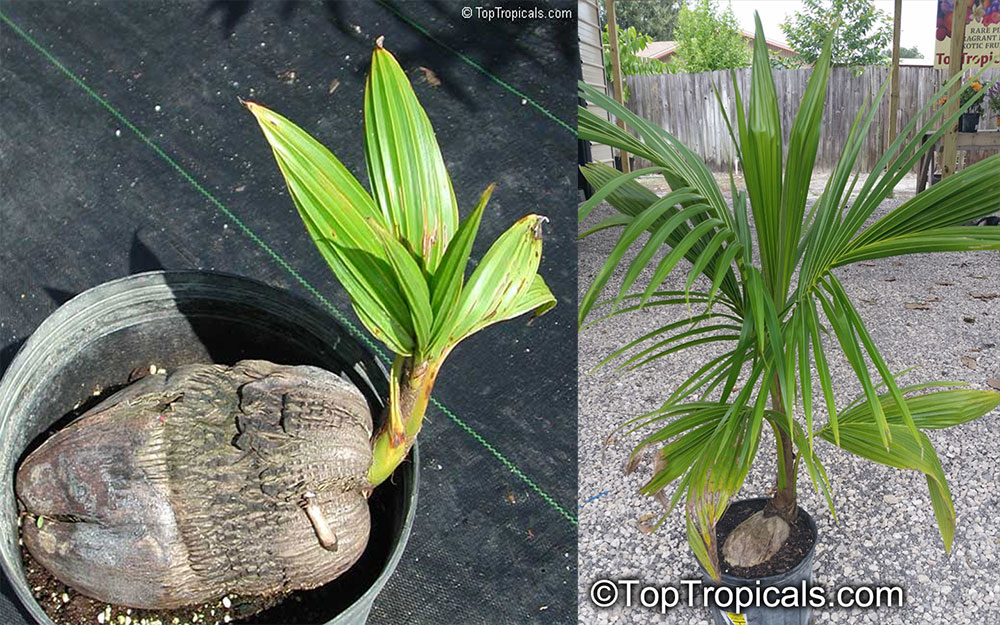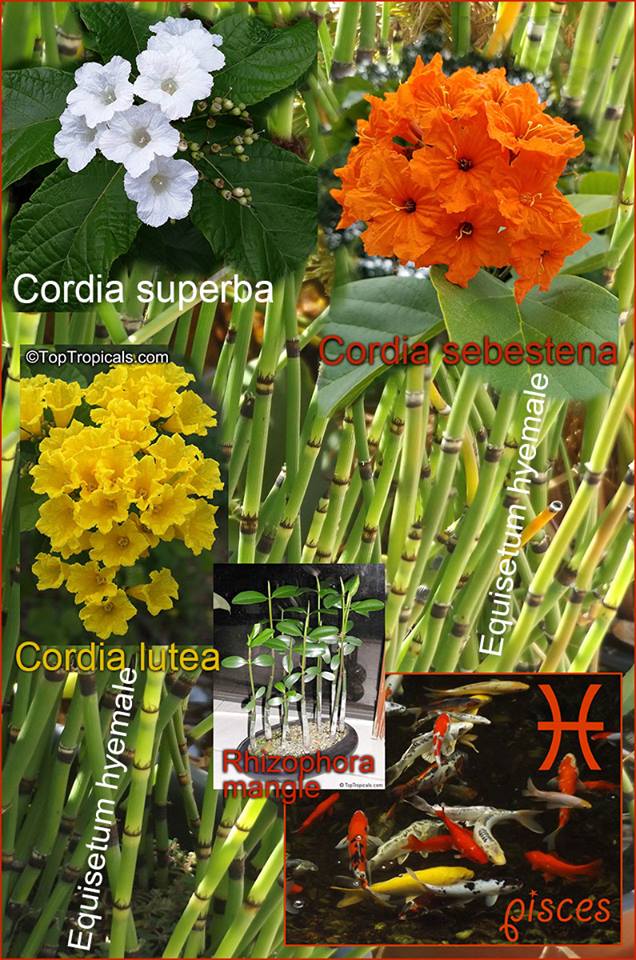Garden Blog - Top Tropicals
How cold hardy are palm trees and how to protect them in winter
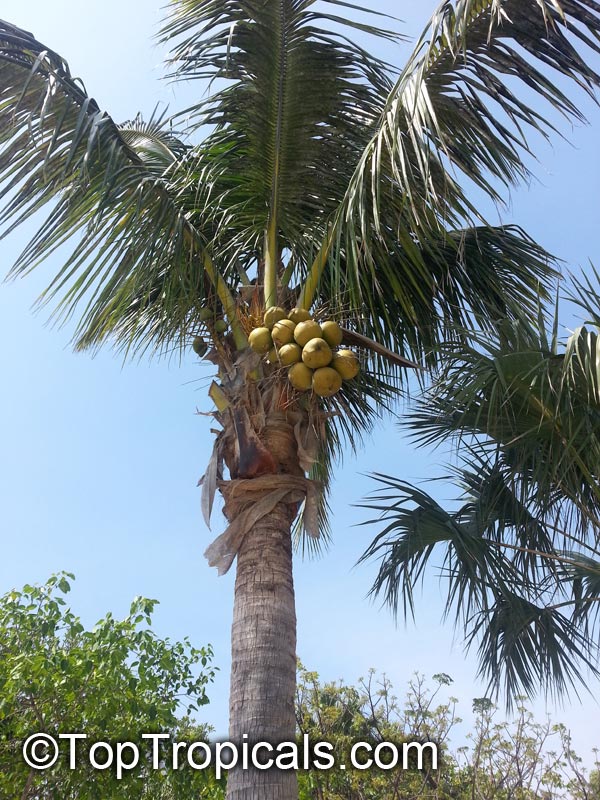
Coconut palm, Cocos nucifera

Fan palm - Licuala sp.

Areca palm - Areca (Dypsis) lutescens
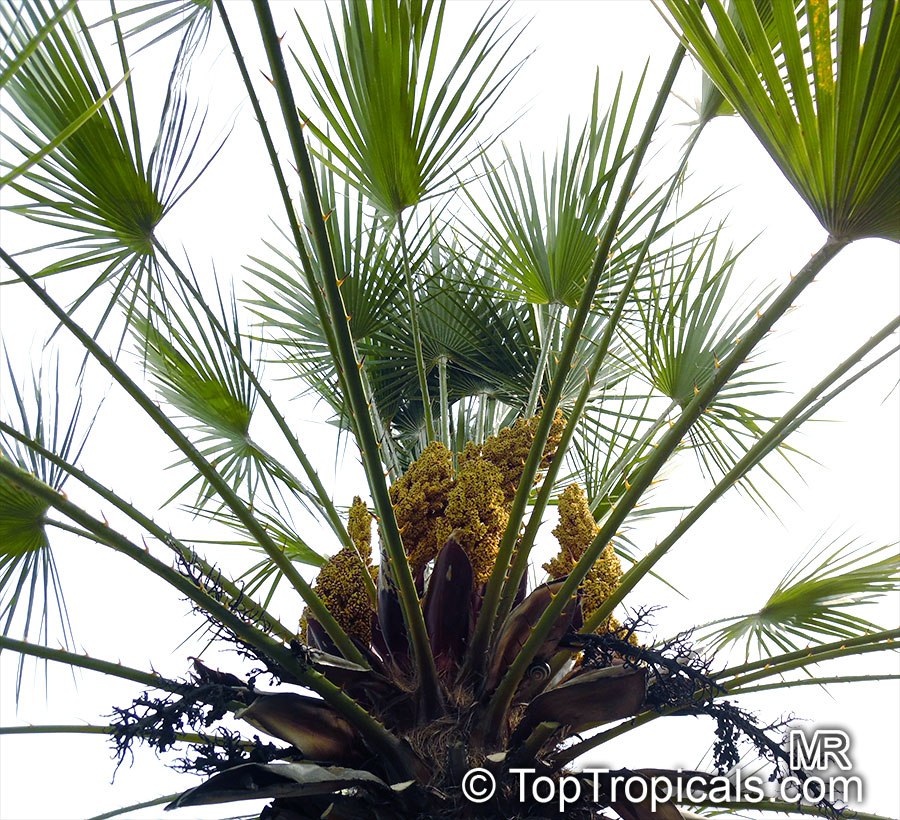
Windmill palm - Trachycarpus fortunei
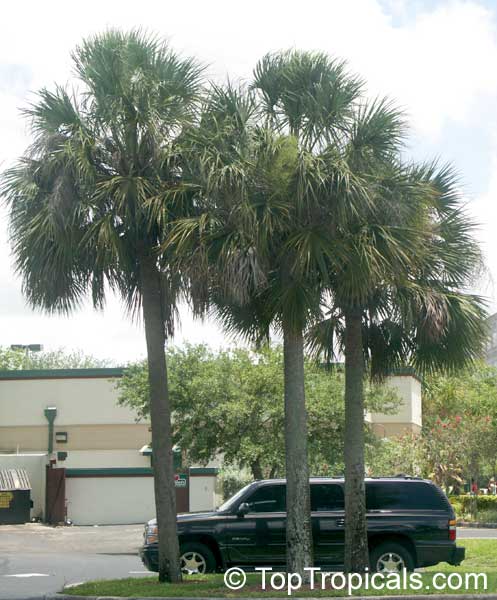
Cabbage palm - Sabal palmetto
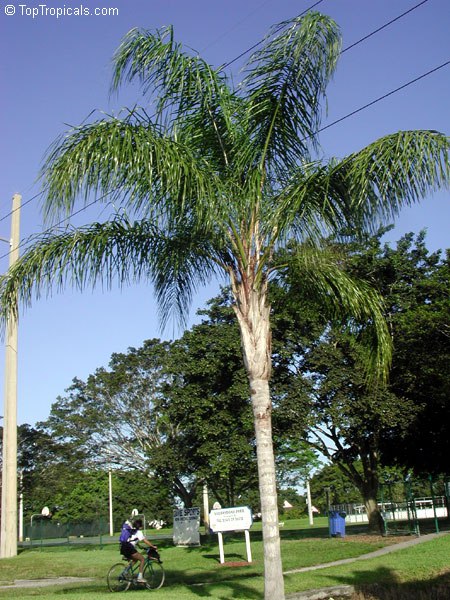
Queen Palm - Syagrus romanzoffiana

Majestic palm, Royal Palm - Ravenea rivularis

European fan palm - Chamaerops humilis

Date Palm - Phoenix canariensis
- 🌴 Most palms are tropical plants and require a frost-free climate to grow outdoors. However, there are a few exceptions. Adjust care depending on your zone and palm species.
- 🌴 Some cold-hardy species can handle harsher conditions, with proper protection, making them great options for gardeners in zones that experience occasional freezes.
- 🌴 Mulch generously: Apply a thick layer of mulch around the base to insulate roots. Keep mulch a few inches away from the trunk to prevent rot.
- 🌴 Water before frost: Water deeply before a freeze to stabilize soil temperature and prevent dehydration.
- 🌴 Cover young palms: Wrap smaller or sensitive species in burlap, frost cloth, or blankets. Avoid plastic, as it can trap moisture and cause damage.
- 🌴 Protect the crown: For cold-sensitive palms, bundle fronds upwards and wrap the crown with cloth or burlap to shield the growing point.
- 🌴 Use heat sources: Place Christmas lights (non-LED) or a heat lamp near the tree, ensuring they’re safe and don't touch the foliage.
- 🌴 Avoid pruning: Keep fronds intact during winter—they provide natural insulation.
- 🌴 Species-specific care: Cold-hardy palms need less protection. Delicate types require more attention, including covering and relocating potted ones indoors.
📷 In the photos:
🌞 Cold sensitive palms:
Coconut palm: Cocos nucifera
Fan palm: Licuala sp.
Areca palm: Areca (Dypsis) lutescens
❄️ Cold hardy palms:
Windmill palm: Trachycarpus fortunei
Cabbage palm: Sabal palmetto
Queen Palm: Syagrus romanzoffiana
Majestic palm: Ravenea rivularis
European fan palm: Chamaerops humilis
Date Palm: Phoenix canariensis
🛒 Shop Palm Trees
#Trees #How_to
🔴 Join 👉 TopTropicals
Date:
Growing by the sea

Q: Please recommend me some interesting plants that can grow on my waterfront property and can withstand some salt wind. All my neighbors have Sea Grape trees and bougainvilleas, and I want something different and special. I would love to have some colorful or fragrant flowers, or fruit around my paradise home.
Q: Considering your neighbors successfully grow Sea Grape (Coccoloba), and Bougainvilleas, you have a mild, frost free climate. There is a number of spectacular and useful tropical plants that are salt tolerant. Orchid Trees - Bauhinias, Poincettia - Delonix, and Geiger trees - Cordias, are very showy flowering trees. For large size bushes, try Dwarf Poincianas - Caesalpinias, and Scarlet-Coral Erythrinas. Frangipani - Plumeria, come in different colors and bring you perfume fragrance from Hawaii. And of course, Desert Roses - Adeniums, can be grown and showy specimens anywhere in your yard, both in the ground or as potted bonsai.
Most palms, especially popular Coconut Palm, source of tasty fruit and drink, are highly tolerant to salt breeze. If you are looking for something that nobody has, Lipstick palm, or Sealing wax palm - Cyrtostachys lakka, is definitely the most spectacular palm you can find. It is a stunning feather palm that develops a brilliantly red trunk. Palm is originally from Malaysia, but has been introduced to Costa Rica and other tropical areas of the world. Sealing Wax Palm seeds are very slow to germinate, up to a year, and large specimens are very rare and hard to find even in rare tropical plant nurseries. This palm will require a good overhead light, and constant warmth (above temperature 55F). It is definitely worth an effort to grow this beauty.
You may add more tropical accents to your landscape by the sea with many varieties of showy heliconias.
Ponytail Palm - The Quirky Plant with a Big Personality!
Beaucarnea recurvata, Ponytail Palm, Elephant-Foot Tree, or Nolina
- 🌴 Beaucarnea recurvata, also known as the Ponytail Palm, Elephant-Foot Tree, or Nolina, is the ultimate low-maintenance showstopper!
- 🌴 With its swollen, bottle-like base (for storing water) and long, flowing, ribbon-like leaves, it looks like a palm but behaves like a succulent.
- 🌴 This adorable plant thrives on neglect, tolerating drought and even a bit of frost - making it a carefree plant.
- 🌴 Cute or quirky, it can be grown in a pot as a showy bonsai with a large caudex.
Put ❤️ for cute and 🔥 for quirky!
🐴 Share your ponytails in pots👇
🛒 Plant the Ponytail
#Container_Garden #Nature_Wonders #Trees
🔴 Join 👉 TopTropicals
Date:

Capricorn - 12/22 - 1/19.
An EARTH sign ruled by the planet Saturn. Capricorn's plants usually have few flowers, or small flowers, are knobby or woody, and may have an unpleasant smell or taste. Saturn rules plants with long lives and slow growth, so plants with annual rings are also associated with the Goat.
Physiologically, Saturn rules the systems that give the body its structure and form: the skeletal system, and the skin, teeth, joints, and knees, so plants that are high in calcium can be very beneficial. Those can be woody plants and shrubs that show annual rings, as well as some poisonous or narcotic plants. Saturn plants are useful in treating arthritis and rheumatism. Traditional Capricorn appreciates a spice that is powerful but familiar. Black pepper adds flavor and a bit of heat to both food and life, creating movement without too much change.
Capricorn Zodiac lucky plants:
Baobab, Peach Palm, Patchouli, Bamboo, Cordyline, Spider Lily, Serissa, Desert Rose, Croton, Aloe, Palms, Giraffe knee plant - Gonatopus boivinii, Adenanthera, Black Pepper, Solanums, Loquat, Aglaonema, Jacaranda, Rosemary, Shisham - Dalbergia sissoo, Neem Tree, Calendula, Brugmansia, Cannabis, Coca, Kava-Kava, Root Beer plant, Kratom, Banesteriopsis, Psychotria, Quince, Almonds, Ginkgo, Olive, Strophanthus, Bread Flower, Amorphophallus, Areca Palm, Anadenanthera, all Pipers, Brunfelsia, Chaya, Persimmons, Surinam Cherry, Bel Fruit, Ashoka Tree, Calla Lily.
For other signs information, see full Plant Horoscope.
Date:


Capricorn - 12/22
- 1/19.
An EARTH sign ruled by the planet Saturn. Capricorn's plants usually have
few flowers, or small flowers, are knobby or woody, and may have an unpleasant
smell or taste. Saturn rules plants with long lives and slow growth, so
plants with annual rings are also associated with the Goat.
Physiologically, Saturn rules the systems that give the body its
structure and form: the skeletal system, and the skin, teeth, joints, and knees, so
plants that are high in calcium can be very beneficial. Those can be woody
plants and shrubs that show annual rings, as well as some poisonous or
narcotic plants. Saturn plants are useful in treating arthritis and rheumatism.
Traditional Capricorn appreciates a spice that is powerful but familiar. Black pepper adds flavor and a bit of heat to both food and life,
creating movement without too much change.
Capricorn Zodiac
lucky plants:
Baobab, Peach Palm, Patchouli, Bamboo, Cordyline, Spider Lily, Serissa, Desert Rose, Croton, Aloe, Palms, Giraffe knee plant - Gonatopus boivinii, Adenanthera, Black Pepper, Solanums, Loquat, Aglaonema, Jacaranda, Rosemary, Shisham - Dalbergia sissoo, Neem Tree, Nutmeg, Calendula, Brugmansia, Cannabis, Coca, Kava-Kava, Root Beer plant, Kratom, Banesteriopsis, Psychotria, Quince, Almonds, Ginkgo, Olive, Strophanthus, Bread Flower, Amorphophallus, Areca Palm, Anadenanthera, all Pipers, Brunfelsia, Chaya, Persimmons, Surinam Cherry, Bel Fruit, Ashoka Tree, Calla Lily.
For other signs information, see full Plant Horoscope.
Date:
Growing a coconut palm

Q: I love your Facebook section "ask the Gardener"! I received a coconut palm from a neighbor four years ago. It sprouted naturally from seed. We moved it to a location where it gets morning/ early afternoon sun in my yard. It hasn't grown. No, really. I've fertilized it, water it, what gives?! It puts out new green leaves every so often to replace old brown ones, but never gets any vertical height changes. I'm stumped!
A: It could be a few things and it could also be the type of coconut you are growing. Cocos nucifera is the only type of palm tree that produces coconuts. Within this species, however, there are dozens of different varieties of coconuts. The different varieties are usually divided into two main types: tall and dwarf. If it is only getting water when it rains, it does need more water. There could also be a problem with the PH in your soil. Most garden centers will be able to test your soil and let you know what it is missing. It could also be a micro-elements deficiency. We do have a micro-elements mix you can find at Toptropicals.com. Micro-elements are not always found in regular fertilizer.
Date:
Virgo - 8/23-9/22. Virgo is an EARTH sign ruled by the planet Mercury, which also rules Gemini.
Virgo is traditionally the Goddess of the Grain, and is associated with autumn. Her plants often have finely divided leaves or stems, subtle odors, or small, brightly-colored flowers. The most beneficial plants for Virgo are high in potassium and help to calm the nerves.
In its rulership of Virgo, Mercury governs the abdomen and the lower intestinal tract and the entire digestive process. Herbs associated with Virgo assist in digestion (as do Cancer herbs) and help to reduce flatulence. The relaxing, calming scents help Virgo release stress and worries.
Virgo Zodiac lucky plants: Amorphophallus, Anethum graveolens (Dill), Barringtonia, Bolusanthus, Dioscorea, Grewia asiatica (Falsa), Hibiscus sabdariffa (Karkade), Iboza riparia, Lagerstroemia speciosa (Queens Crape Myrtle), Laurus nobilis (Bay Leaf), Lippia, Melissa, Catnip, Mint, Arugula, Piper betle, Piper sarmentosum, Psychotria, Syzygium aromaticum (Clove), Banisteriopsis, Papaya, Mesua ferrea (Ironwood), Momordica, Euterpe oleracea (Assai Palm), Jacaranda, Magnolia officinalis, Pimenta dioica (Allspice), Osteospermum, Petrea, Plumbago, Clitoria, Eranthemum, Litchi, Cashew, Pecan, Nut trees, Cherries, Lavender, Myrtles, Sansiveria, Aloe vera, Blackberry, Honey suckle, Satureja, Vitex, Mulberry, Elaeocarpus, Clausena lansium (Wampi), Feronia elephantum (Bel Fruit).
For other signs information, see full Plant Horoscope.
Date:
Growing Coconuts from seeds
Q: Good afternoon Anna, hope all is well. I have a question regarding Coconut growth. When I planted my coconuts seeds I notice they had water in it, after checking 6 months later I took one out from the pot and shock to see if still had water but notice no water shaken inside, still, no plant growing on all 6 seeds but no water noise inside of them. Can you indicate if I should discard them or are they still have a chance they will germinate?
A: Coconut seeds normally germinate within a month from planting.
If there is no growth within 6 month, chances are the seed was not ripe
enough, or didn't have proper conditions for germination.
To grow a coconut palm from seed, place the nut on top of the soil (if
in a pot, must be at least 3 gal pot) on its side, and bury it in soil
half-way. Keep it warm (75F or higher, the warmer the better), in full sun, and
soil must stay moist. Start fertilizing when the seed sprouts.
RECOMMENDED FERTILIZER:
Purple Palm Food - Smart Release Palm Booster
Photo below:
James Coconuts, one of our customer service reps, will be happy to answer all your questions! (Anna Banana, Stevie, or Onika can help when Coconuts is out of the office).
Date:
Pisces Zodiac lucky plants

Pisces- 2/19 -
3/20. As a WATER sign ruled by both Jupiter and Moon (and Neptune, that
was not discovered until 1846, after the plant correspondences were
established; Neptune is considered a "higher octave" of the Moon), Pisces plants are
often large but hard to find, and may grow near the ocean. The most healing
plants for Pisces are those that strengthen the immune system or have an
antibacterial effect. Pisces plants may also catalyze expanded states of awareness
and be helpful in dream work.
Herbs connected to Pisces are ruled by its former ruler, the Moon
(Neptune, the current ruler, was not discovered until 1846, after the plant
correspondences were established; Neptune is considered a “higher octave†of
the Moon). Diseases of Pisces have traditionally included psychotic disorders,
various forms of substance addiction, lung diseases such as tuberculosis, and
ailments of the foot; contemporary herbalists also add immune system
diseases. Pisces is strengthened by rosemary's ability to promote an aura of
centered grounding. This protective herb helps strengthen boundaries and cultivate a
closer connection to the physical realm.
Pisces Zodiac
lucky plants: Water lily, Lotus, Clematis, Wisteria, Lisianthus, Brunfelsia, Echinacea, English Lavender, Rosemary, Coconut palm, Cranberry, Clove, Coccoloba, Sea Oats, Mangroves, Ochrosia, Aquatic plants, Colocasia, Alocasia, Aralia, Ficus trees, Banyan, Peepal, Banana, Mango, Mimosa, Olive, Anise, Vilca and Yopo, Kava-kava, Nutmeg, Anthuriums, Eucalyptus, Bauhinia,
Clusia, Caesalpinia, Callistemon, Bucida, Cassia fistula, Cordia, Calabash, Lipstick palm, Delonix, Elaeocarpus, Erythrina, Fatsia, Guaiacum, Mahoe, Koelreuteria, Kopsia, Macaranga, Pandanus, Peltophorum, Psychotria, Banesteriopsis, Tabebuia.
For other signs information, see Plant Horoscope Page.
This is why its called Heaven Lotus Tree - fragrant and edible!
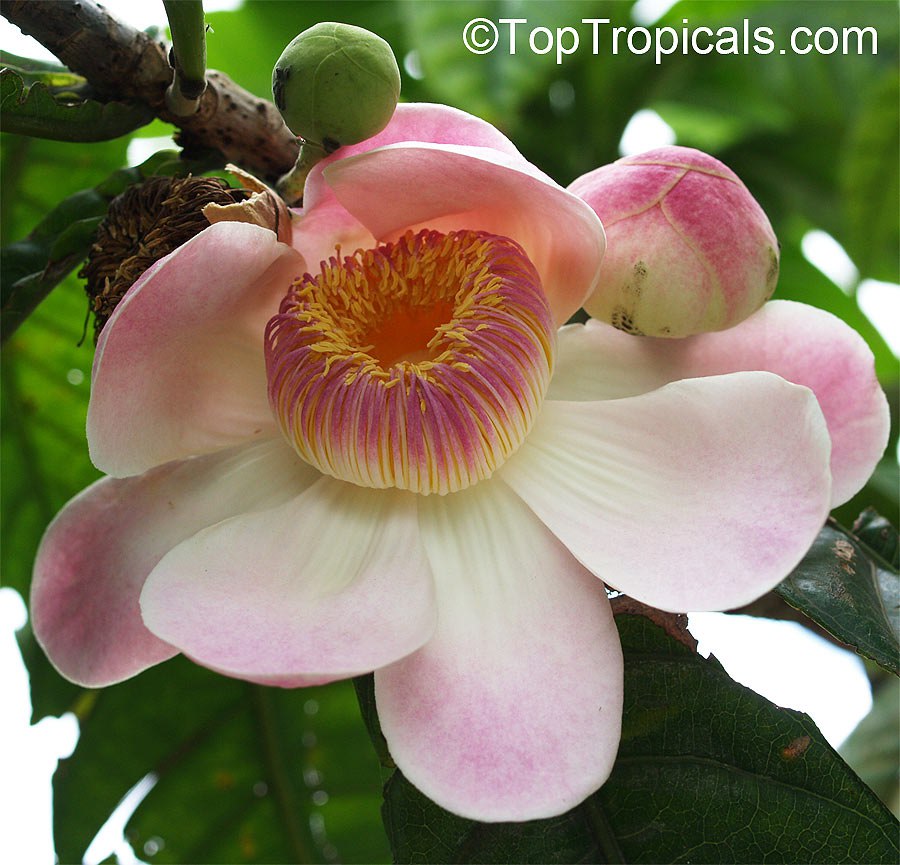
Gustavia augusta - Heaven Lotus, flower

Gustavia augusta - Heaven Lotus, tree
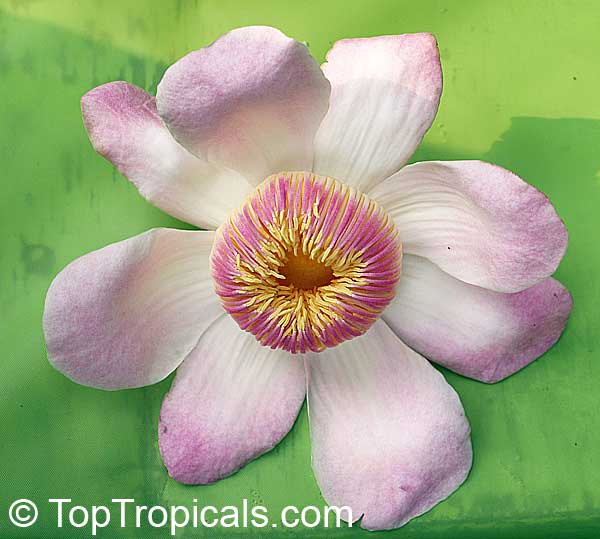
Gustavia augusta - Heaven Lotus, flower

Gustavia augusta - Heaven Lotus, flower close-up
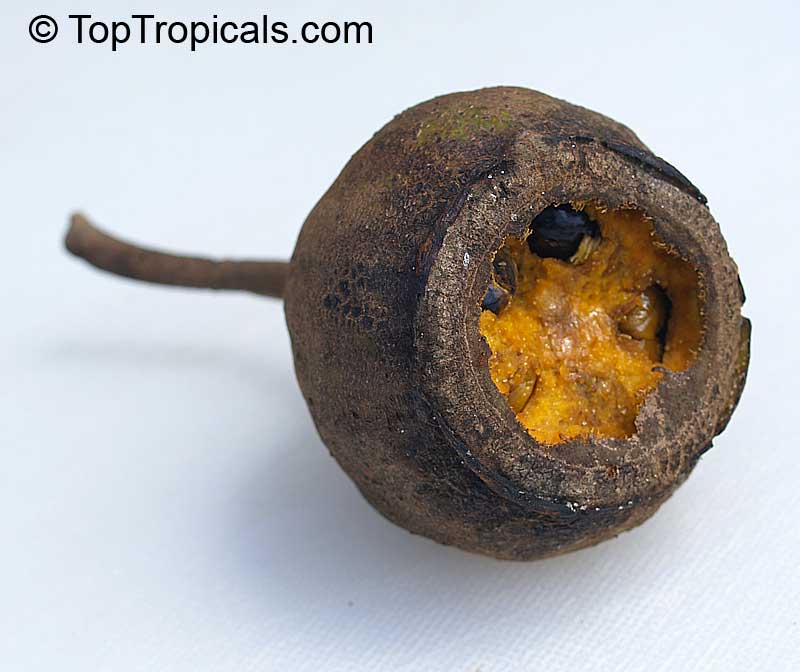
Gustavia augusta - Heaven Lotus, fruit
- Gustavia augusta - Heaven Lotus - is a stunning, small tropical tree from Brazil that looks like it stepped right out of a tropical paradise. The spectacular, perfumed flowers resembling Lotus are as beautiful as they are unique.
- These large, striking blooms with white-and pink petals and a magic sweet fragrance are so eye-catching that the central crown almost looks good enough to eat!
- Straight, often unbranched trunk, with a single cluster of leaves at the top, gives it a palm-like vibe. As it grows older, it may sprout a few large branches, each with its own leafy crown. The leaves are huge - no other tree around has leaves quite as big, except maybe a palm. They're long, narrow at the base, and broad at the top, making them a real showstopper.
- The rounded, pear-shaped fruit grow directly on the trunk (a trait called cauliflory, see earlier post) and contains delicious yellowish-orange pulp that can be boiled and resemble meat in taste. The leaves, when boiled into a decoction, are said to cure intoxication.
- Truly an exciting, one-of-a-kind tree, a gem for collectors! Can be grown in containers.
🛒 Enjoy your own Heaven Lotus Tree
#Container_Garden #Trees #Nature_Wonders #Perfume_Plants
🔴 Join 👉 TopTropicals



